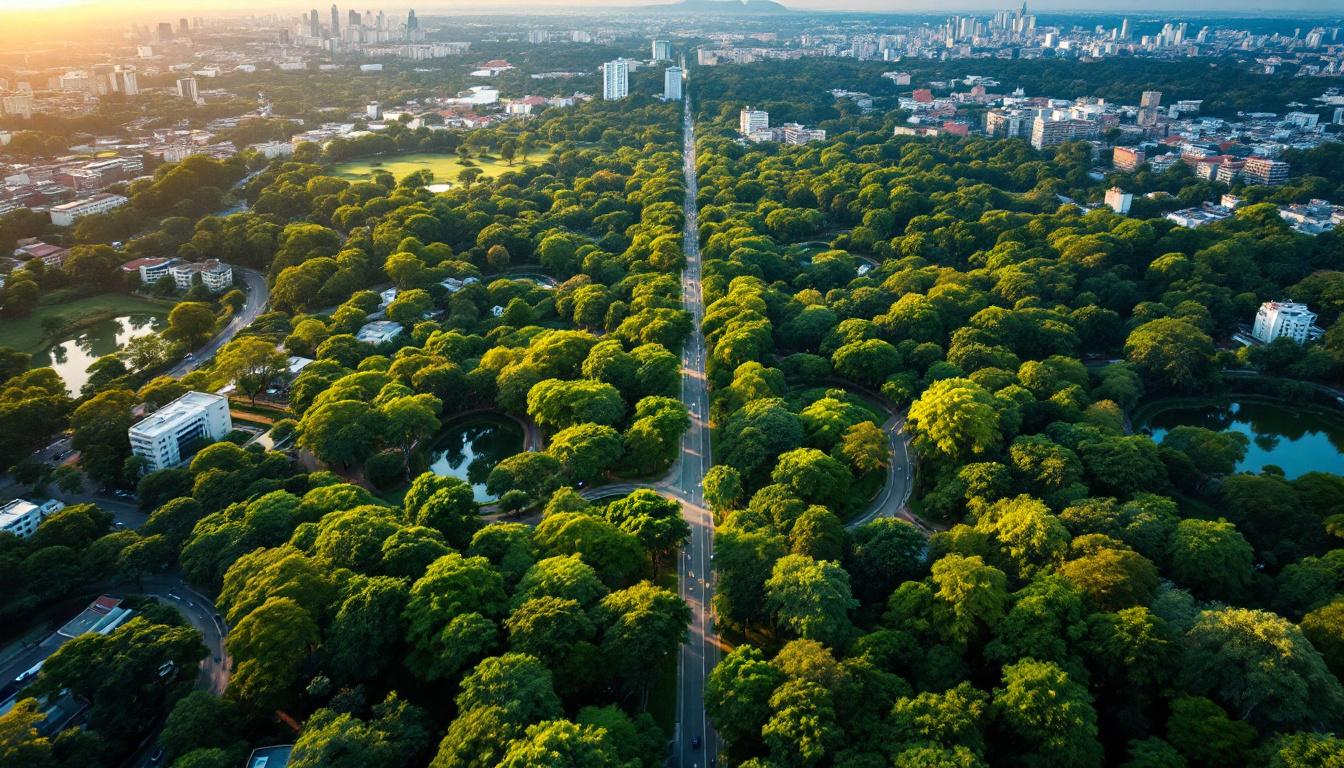São Paulo overwhelms with 12 million people and suffocating traffic. Rio dazzles tourists while locals flee rising costs and crowds. But 250 miles south, Curitiba quietly offers 64.5 square meters of green space per person – ten times more than most Brazilian cities – at prices that won’t devastate your budget.
This isn’t another “hidden gem” story. Curitiba earned recognition as Brazil’s ecological capital through decades of innovative urban planning, not Instagram marketing. While other cities chase tourists, Curitiba perfected sustainable living that actually works.
The numbers tell the real story: 70% waste recycling rate, 2 million daily bus rides on the world’s first Bus Rapid Transit system, and accommodation costs running 60% below São Paulo’s tourist traps. Forget the chaos – this is how Brazilian cities should work.
Why São Paulo’s concrete jungle can’t compete
Green space that actually exists
São Paulo manages 12 square meters of green space per resident. Curitiba delivers 64.5 square meters per person across 22 municipal parks and 16 protected woods. Walk through Barigui Park at sunrise, and you’ll understand why urban planners worldwide study this city’s forest preservation model.
Air you can actually breathe
Those 300,000 street trees aren’t just decoration – they capture 140 tons of CO2 per hectare while creating natural cooling corridors. São Paulo’s smog-choked streets feel suffocating after experiencing Curitiba’s tree-lined boulevards where joggers actually run outdoors year-round.
The European heritage São Paulo lost decades ago
Authentic immigrant neighborhoods still thriving
Polish, German, and Italian communities built distinct districts like Abranches and the elegant Batel neighborhood where European architecture survives without tourist kitsch. Sunday farmers markets feature pierogi alongside Brazilian specialties – cultural fusion that happened organically, not for Instagram posts.
Mate tea culture and real local experiences
Skip São Paulo’s trendy cafés charging $8 for coffee. In Curitiba’s European quarters, traditional mate tea ceremonies cost under $3 while locals share stories about their grandparents’ immigrant journeys. These aren’t staged tourist experiences – they’re authentic community traditions.
The transportation revolution São Paulo needed 30 years ago
Bus Rapid Transit that actually works
Architect-turned-mayor Jaime Lerner pioneered the BRT system in 1974 that now serves 2 million rides daily. Express lanes, tube stations, and unified pricing move people efficiently while São Paulo’s metro expansion crawls forward decades behind schedule.
A city designed for humans, not cars
Pedestrian-only streets connect major attractions without dodging traffic. Bike lanes integrate seamlessly with green corridors, creating transportation networks that prioritize people over vehicles. It’s urban planning that works – not just looks good in architectural magazines.
Why your budget will thank you for forgetting São Paulo
Accommodation without the tourist tax
Boutique hotels in Curitiba’s Batel district cost 60% less than equivalent São Paulo properties near tourist zones. You’ll find European-style guesthouses with garden courtyards starting around $45 per night – prices that disappeared from Brazil’s famous cities years ago.
Restaurant prices that make sense
Churrascarias serving premium cuts with full salad bars cost under $20 per person. Traditional Polish restaurants offer hearty meals for $12-15 while São Paulo’s tourist-focused establishments charge double for smaller portions and longer waits.
Curitiba isn’t trying to be the next big destination – it’s too busy being a model for sustainable urban living. The city’s Environmental Protection Areas and Private Natural Heritage Reserves prove environmental preservation and economic growth can coexist.
Direct flights connect through São Paulo or Rio, but consider this mandatory layover an advantage. You’ll skip the tourist crowds and discover Brazil’s most livable city where innovation happens quietly, green spaces actually exist, and your travel budget stretches further than you imagined possible.
Planning your visit to Brazil’s sustainable capital
When should I visit Curitiba for the best weather?
March through May and September through November offer mild temperatures and minimal rainfall. These shoulder seasons also mean fewer crowds in the city’s extensive park system and better availability at boutique accommodations.
How do I get around Curitiba without speaking Portuguese?
The BRT system uses color-coded lines and pictographic signs making navigation intuitive for international visitors. Most hotels in Batel provide transit maps, and the integrated bike lane network connects major attractions with clear directional signage.
What makes Curitiba different from other Brazilian cities?
Curitiba prioritized environmental sustainability and quality of life over rapid growth. The result is Brazil’s highest recycling rate, most green space per capita, and most efficient public transportation – proving sustainable development works in practice, not just theory.
Where should I stay to experience authentic Curitiba culture?
The Batel neighborhood offers European-influenced architecture with easy access to parks and cultural sites. Historic guesthouses here provide authentic immigrant heritage experiences while maintaining proximity to the city’s innovative urban planning showcase areas.
Can I visit Curitiba’s environmental projects and urban planning sites?
Yes, guided sustainability tours highlight Jaime Lerner’s urban innovations including the original BRT stations and green space integration. Many tours are conducted by local urban planning students who provide detailed insights into how these systems actually function daily.
